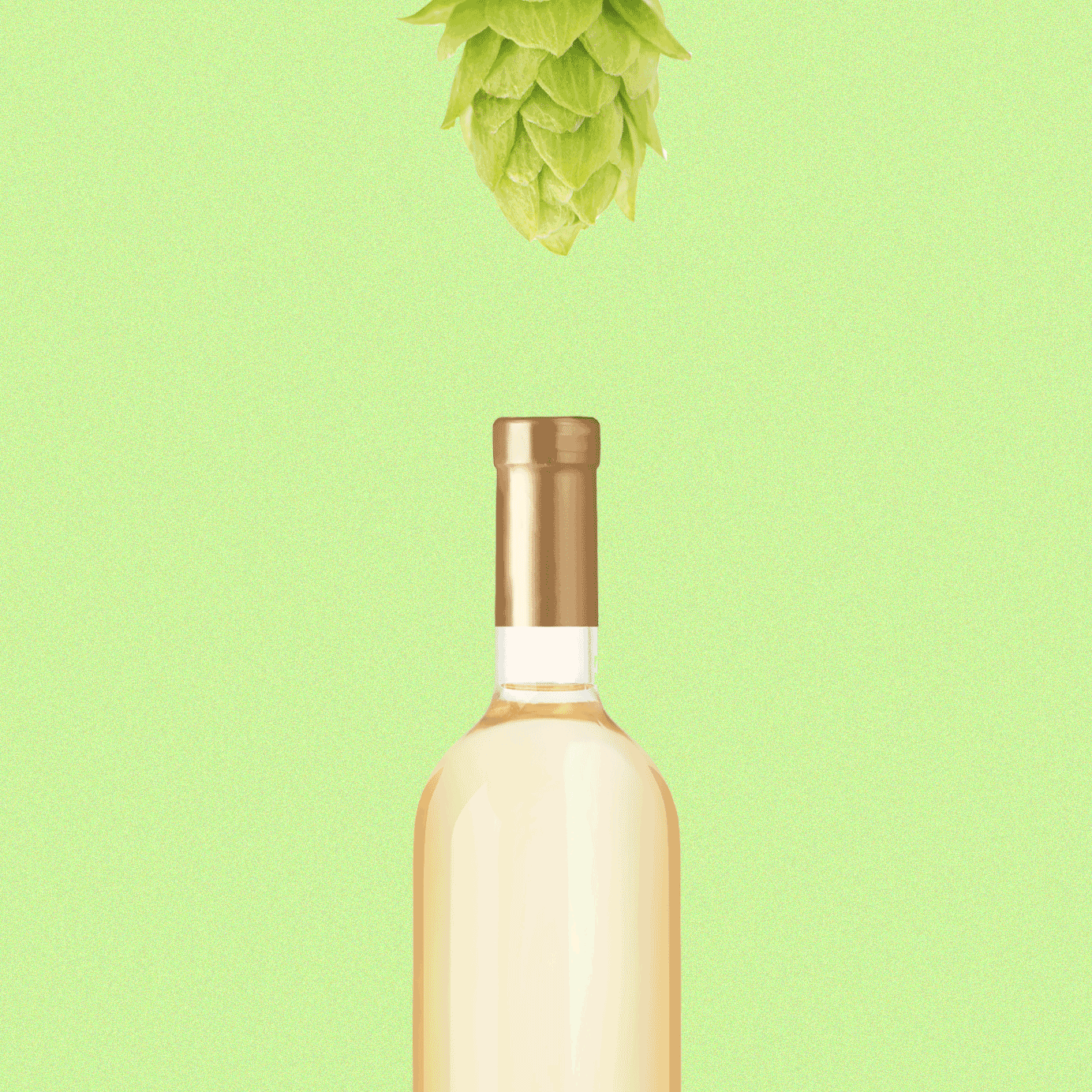It’s no secret that beer has been getting more wine-like in recent years, with many modern IPAs commonly described as “juicy” and “fruity,” two terms that were once strongly associated with young red wines. Factor in the slew of beers that are now aged in former wine barrels and the growing popularity of grape ales, Italian or otherwise, and you can make a case that craft brewers are stepping on turf that once belonged almost exclusively to winemakers.
But that street goes both ways. As brewers make beers with the characteristics of great vino, vintners are experimenting with dry-hopping their wines, creating exciting new wines that can exhibit the trademark aromas of many craft beers.
“I view it as complementary,” says Joe Krajkiewcz, the winemaker and owner of Michigan Wine Company, who recently released a dry-hopped white wine. “It’s about the aromatics. It kind of kicks it up a notch. It says, ‘Hey, this is interesting.’”
That new release is a semi-dry white wine Krajkiewcz made from Seyval Blanc, a relatively modern French hybrid grape. Toward the end of the wine’s fermentation, Krajkiewcz added whole cones of Citra hops for about two weeks of dry-hopping. The aromas from the hops, Krajkiewcz says, work well with that particular grape.
“Seyval has some spice to it,” he says. “It’s not a neutral grape. It has some unique characteristics.”
Make no mistake: Even if we call it “dry-hopping,” we’re still talking about liquids. In dry-hopping, hops are added to beer — or in this case, to wine — after the boil at relatively cool temperatures, either during or after fermentation, as opposed to the more common method of adding hops during the boil. The primary difference? Adding hops to the boil is what creates the characteristic bitter flavors of beer, while dry-hopping adds aromas only.
It’s not just winemakers who are dry-hopping wines — some beer makers are doing it, too. Working with Mosel’s Weingut Meierer, the Danish craft brewery Mikkeller released a 2017 vintage Riesling that was dry-hopped with Eukanot hops. In Germany, Sebastian Sauer’s cult brewery Freigeist may have been the first to experiment with dry-hopping wine, when he released three labels in 2014, all of which were imported to the U.S. “As far as I know there weren’t any others at that time,” Sauer says. “I’m not a winemaker, obviously, but I thought there might be the potential for it.”
As a brewer, Sauer noticed that dry-hopping works differently in wine than in beer.
“You get a different taste,” Sauer says, comparing the effects of hops in wine and beer. “With beer, the Citra hop seems to get more citrus character, which I didn’t really find in the wines. It’s just a totally different base beverage for the hops to react to.”
At Renegade Urban Winery in London, founder Warwick Smith says that sometimes the hops that you love in an IPA simply don’t work in wine. After creating a dry-hopped sparkling wine, Bethnal Bubbles, in 2017, Smith has been working on a new dry-hopped wine to release later this year, moving away from the Seyval Blanc grape the winery used in the previous version.
“We’ve just done it again, but this time using an English grape, Solaris, which is much more aromatic,” Smith says, noting that he’s doing trials with several hops, including Amarillo, Galaxy, Opus, and Nelson Sauvin. But the results can vary dramatically. To boot: “Galaxy, which is one of my favorite hops in beer, just did not work. It smelled like a public toilet.”
Instead, the forthcoming version of Renegade’s dry-hopped wine will receive a half-and-half mix of Nelson Sauvin and Mosaic. Smith says that the blend works well with Solaris, adding a nice touch of pineapple.
Smith’s original dry-hopped wine was inspired in part by a wine he had seen while visiting The Infinite Monkey Theorem winery in Colorado. “They had a Sauvignon Blanc made from California grapes, dry-hopped, force-carbonated, and canned,” Smith says. “That was the first time I had seen a dry-hopped wine.”
Another source of Smith’s inspiration? Necessity, aided by an open-minded approach when the original sparkling wine he was working on didn’t seem interesting enough. “I said, why don’t we hop it,” Smith says. “We picked hops that complemented [the wine’s] acidity. We played around with different hop weights.”
In the end, they added hops for about 10 days at a remarkable 8 grams per liter, or just over 2 pounds per barrel — about the hopping rate for a West Coast IPA or DIPA. “We did all the trials, and that’s just what we liked,” Smith says. “That was before I realized how expensive it would be.”
You’d be surprised where you might find a hop-infused wine. I recently came across Nachmelené, a “hopped” Chardonnay wine cooler from the Czech Republic, which is almost the antithesis of the country’s strong natural-wine movement. Meanwhile, in Paso Robles, Calif., Field Recordings Winery dosed its Dry Hop Pet Nat with Mosaic to make a wine that’s like a pet-nat crossed with a sour beer. And other dry-hopped wines are popping up in beer-loving wine regions, like Oregon and Washington.
For Smith, it makes sense for modern winemakers to take a bit of inspiration from brewers. “If you look at the craft beer world and the level of experimentation there, it would be nice to have some of that in wine,” he says. “Wine has been in this world for so long, it needs to live a little.”
This story is a part of VP Pro, our free platform and newsletter for drinks industry professionals, covering wine, beer, liquor, and beyond. Sign up for VP Pro now!
